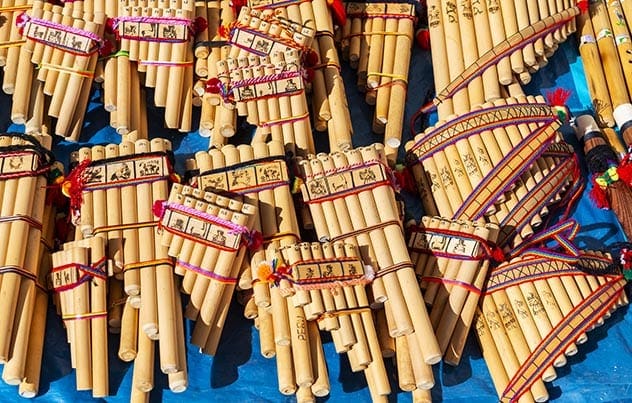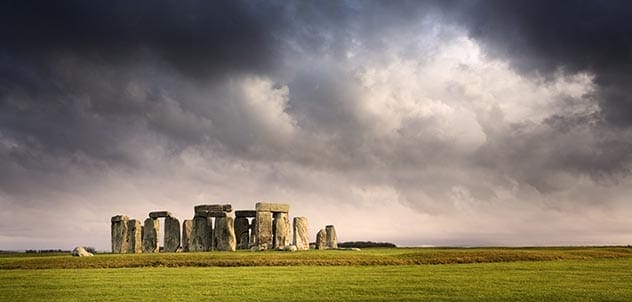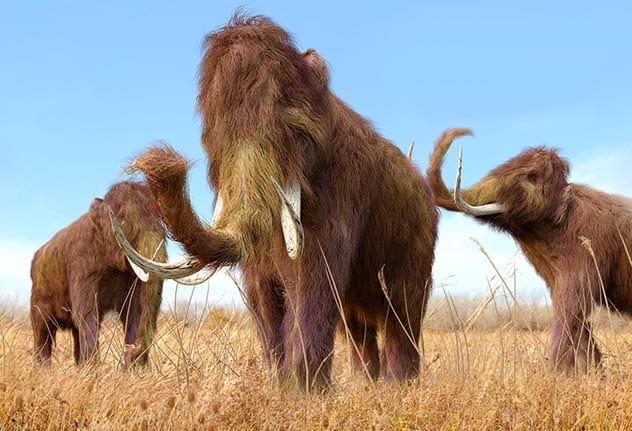History leaves behind fascinating clues about extinct civilizations. We can explore ruins, study ancient remains, and read captivating stories. But what about the sounds of the past? Modern science and sound engineering are bringing the past to life, allowing us to hear what ancient people, animals, and even instruments might have sounded like.
8 Resurrected Ancient Sounds
Here are some incredible examples of resurrected ancient sounds that allow us to connect with history in a whole new way:
A Pile Of Extinct Birds
Te Papa, New Zealand’s national museum, recreated the vocalizations of extinct native birds for their Te Taiao exhibition. Sound designers used sounds from related species, like the golden eagle, to imagine the calls of birds like the Haast’s eagle and the moa. The Haast’s eagle call, created by sound engineer Piers Gilbertson, combined golden eagle vocalizations with those of the Wahlberg’s eagle. You can hear these recreations of the moa, the Finsch’s duck, the New Zealand goose, and the huia.[1]
Panpipes From Roman Egypt

In 2018, researchers at the University of Kent successfully 3D-printed a working replica of panpipes from Roman Egypt. The original, fragile reed panpipes were scanned as part of a collaborative project. Finding suitable reeds for a new set was nearly impossible, so they opted for a biodegradable thermoplastic. The replica played a musical scale known to have existed in Roman Egypt, a discovery Dr. Ellen Swift called a “real eureka moment.” The team was surprised by the high pitch of the panpipes. You can listen to the panpipes here.[2]
Ancient Greek Music
While there’s plenty of documentation about ancient Greek music, recreating its actual sound has been challenging. Dr. Armand D’Angour from the University of Oxford analyzed a papyrus from 408 BC containing a chorus from Euripides’ play Orestes. He discovered that the music used quarter-tone intervals as “passing-notes” and featured “word-painting.” In 2016, after three years, he reconstructed the music. The recreation and playing of the aulos, a common wind instrument, helped determine the pitch range of ancient Greek music. In 2017, the Orestes piece was performed by an aulos player and choir, bringing the sounds of ancient Greece to life.[3]
Nesyamun
In 2020, scientists recreated the voice of Nesyamun, a 3,000-year-old Egyptian priest. His vocal tract was well-preserved, and after CT-scanning the mummy’s throat, they 3D-printed a replica of his vocal tract and attached it to a speaker which played the sound. The result was an “eeeeehhh” sound. Replicating Nesyamun speaking is more difficult due to the condition of his tongue and the need for more insight into his language’s phonetics. Dr. Howard believes generating whole words in Nesyamun’s voice may be possible in the future. Hear Nesyamun’s Resurrected Voice.[4]
The Acoustics Of Stonehenge

What did Stonehenge sound like over 4,000 years ago? Dr. Trevor Cox from the University of Salford replicated how sound reverberated through Stonehenge in 2200 BC, before stones were moved. Using detailed laser scans, he 3D-printed a 1:12-scale replica and tested it in an acoustic research chamber. He found that even though Stonehenge was open-air, it had acoustics like an enclosed space. Sound bounced off the stones, making voices sound more powerful, which would have seemed impressive to people at the time. The team plans to test the acoustics at other points in Stonehenge’s history. Listen to the sounds of Stonehenge.[5]
The Iceman
In 2016, scientists recreated the voice of Ötzi, the “Iceman” found in the Alps. Rolando Füstös CT-scanned Ötzi’s throat. Software helped reconstruct Ötzi’s hyoid bone, as one of his arms was over his throat. Limited soft tissue preservation and unknown vocal cord tension and language posed challenges. Researchers used software and mathematical models to recreate Ötzi’s voice. The vowel sounds produced were between 100 and 150 hertz and sounded gravelly. Hear the Iceman’s voice.[6]
Woolly Mammoth Vocalization

Marguerite Humeau, inspired by a robotic mouth, aimed to recreate the vocal tract of extinct animals. She started with Lucy, the Australopithecus afarensis, and then moved on to a woolly mammoth. Consulting with paleontologists and elephant vocalization specialists, she built a 20-foot apparatus to emulate the mammoth’s vocalizations. Both voice boxes were exhibited at the Royal College of Art in London in 2011. The mammoth’s low rumble frightened children. Listen to the woolly mammoth (three minutes into the clip).[7]
The T-Rex’s Rumble
Tyrannosaurus rex likely didn’t roar as portrayed in movies. Chris Packham contacted Dr. Julia Clarke, who used Chinese crocodiles and the Eurasian bittern’s call to estimate the T-rex’s sound. Scans of a fossilized Tyrannosaur braincase indicated the dinosaur could hear very low frequencies. Packham suggested the carnosaur’s vocalizations would have been a low-frequency rumble that you would feel. The result is a deep rumble that the T-rex probably didn’t even need to open its mouth to make. Hear the T-Rex’s deep rumble in the video.[8]
Conclusion
These resurrected ancient sounds offer unique insights into the past. From the calls of extinct birds to the deep rumble of the T-Rex, science allows us to experience history in ways we never thought possible. These recreations provide a deeper connection to ancient civilizations and the creatures that roamed the earth long ago.
What ancient sound fascinates you the most? Leave your comment below!










